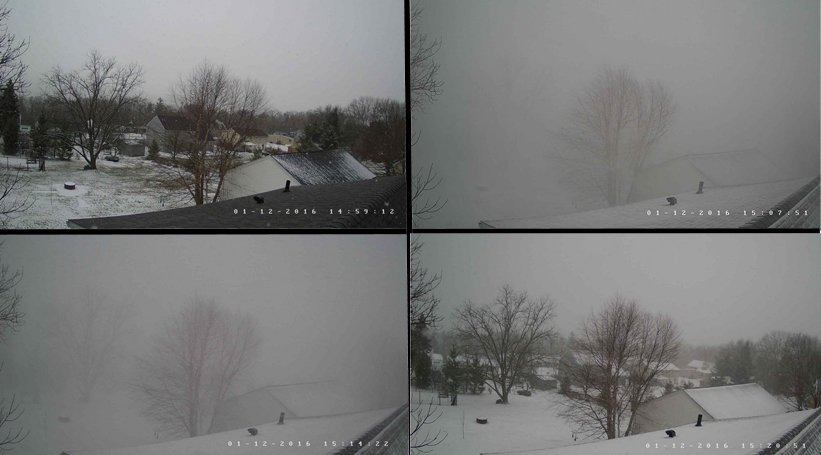1.) Incredible 24-Hour Temperature Drops

One of the favorite maps among meteorologists when an arctic cold front is sweeping through the country is the 24-hour temperature change. Frequently you'll see locations 40 or more degrees colder than the exact same time the day before.
The image above shows the 24-hour temperature changes that occurred in the central Plains behind an arctic cold front Nov. 29-30, 2014 at 2:30 p.m, local time. Some areas in Kansas and Nebraska saw the mercury plunge 50-60 degrees during that 24-hour period.
As an example, O'Neill, Nebraska, was 76 degrees at 2:55 p.m. CST Nov. 29. The next day at 2:55 p.m. it was just 15 degrees with a wind chill of 2 below zero -- a 61-degree drop in the actual temperature and a 78-degree drop in the feels-like temperature.
2.) Major Temperature Plunges Can Occur in Minutes
In extreme situations, the temperature drops that follow arctic cold fronts can happen in just minutes.
For this next example we turn back the clock to Dec. 12, 1919 in Amarillo, Texas. An arctic cold front, locally known as a Blue Norther in that part of the country, swept into the Texas panhandle town.
A noon it was 67 degrees, pleasant for an early December day at lunchtime. Cold northerly winds then rushed in behind the Blue Norther, dropping the temperature to 23 degrees by 1 p.m. An incredible plunge of 44 degrees in one hour.
It got even worse through the afternoon and early evening. In fact, by the time people were cleaning up from dinner around 7 p.m., it was only 1 degree above zero.
3.) A Few Miles Makes a Big Temperature Difference

Another aspect of arctic cold fronts that frequently draws the attention of meteorologists is the difference in temperature over short distances.
The map above shows a 44-degree temperature difference observed on the afternoon of March 4, 2015, across a span of about 120 miles between the Mississippi towns of Aberdeen (81 degrees) and Tunica (37 degrees).

Denver on Nov. 30, 2014, provided us another striking example of the contrasts that can occur in a metro area along an arctic cold front. Areas near the foothills west of Denver were in the 50s to near 60 degrees, while east and north of Denver it was in the 20s.
4.) Blinding Snow Squalls
Arctic cold fronts can also be accompanied by heavy bursts of snow as they pass through an area that already has subfreezing air in place.
Those snow squalls might be brief and produce little accumulation, but they can be a hazard to travelers by dropping visibility quickly and leading to automobile pileups.
Snow on the leading edge of a reinforcing arctic front on Jan. 12, 2016m caused multi-car pileups to occur in Indiana, Ohio and Pennsylvania. The snow didn't last long in any one location, but came down heavily as it passed through.
Time series every 6-8 min from 2:59 pm to 3:20 pm of #snowsquall in Hollidaysburg, PA. wunderground.com/webcams/jlcox/…
5.) Kicking Off Major Lake-Effect Snow

Early in the winter season, arctic air masses sweeping across the Great Lakes often make conditions ripe for significant bouts of heavy lake-effect snow.
The frigid temperatures aloft in contrast with the relatively warmer waters of the lakes leads to the development of snow squalls streaming downwind of all the Great Lakes.
Sometimes the bands of snow will be accompanied by thunder and snowfall rates of an inch or more per hour. In localized areas, snowfall totals are measured by the foot.


No comments:
Post a Comment